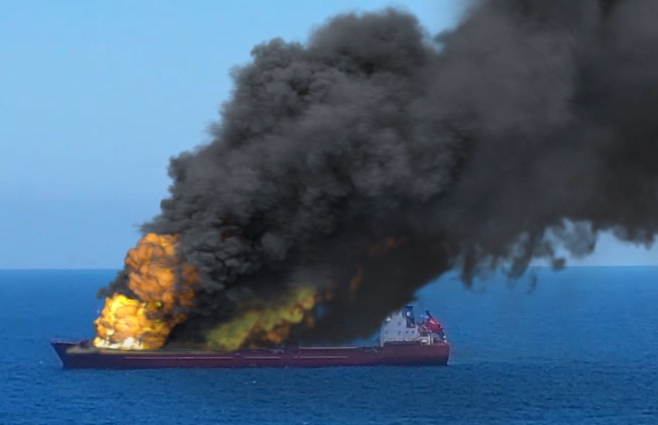
At just three months old, the X-Press Pearl is now a blackened hulk following yet another catastrophic containership fire 9.4 nautical miles off the coast of Sri Lanka. It’s a shocking reminder of the dangers of poorly secured chemical shipments. Preliminary reports suggest that poor packaging caused a leak, leading to explosions and fires which were still burning 6 days after it was first reported on May 20th. The 2,700 TEU vessel was loaded with 1,486 containers, including 25 tons of nitric acid and other chemicals which it had loaded at the port of Hazira, India on May 15.
Damage to the Singaporean containership is so extensive that general average has already been declared. And while the X-Press Pearl’s crew were safely evacuated, there is deep concern about the risk the ship and its cargo now pose to the surrounding environment and local people have been advised to avoid any debris coming ashore.
The fact that failure to correctly pack and secure the cargo inside a single container of chemicals can lead to the total loss of a ship and threaten ocean ecosystems, should make everyone working in chemical logistics pause for thought.
Is everyone working in your supply chain fully up-to-date with best practice? Can you be sure that everyone has been properly trained in the risks associated with the shipments they are preparing and how to protect them? Are your teams across the world fully compliant with the necessary cargo safety codes and regulations? Could you find yourselves being held responsible for a disaster of this magnitude?
This latest fire is a yet another wake-up call to everyone shipping containerized cargo, especially those working in the chemical industry. Your only defense against negligence claims and punitive damages, is to operate to the very highest standards and demonstrate complete compliance with both local and international safety regulations.
Cordstrap have worked closely with the world’s major regulatory bodies to engineer cargo protection systems that match or exceed their safety requirements. All of our cargo protection systems are fully CTU code compliant and have been certified by the world’s leading regulators and insurers including: DNV, the IMO, Mariterm AB, Eurosafe and the Association of American Railroads (AAR).
Because we operate a truly global network, we can ensure that your supply chain is operating to the same, consistently high, standards right across the world. Our cargo protection experts can advise your local logistics team about best practice and how to avoid the kind of minor errors and assumptions, that can easily turn into major disasters. Applying best practice will also reduce your shipments risk of rejection at ports and help lower insurance costs, which are being driven up by incidents like the fire aboard the X-Press Pearl.
To find out more about how Cordstrap’s cargo protection solutions can help lower your total costs and protect you from disaster, contact our global network of experts.
For expert advice on cargo securing solutions contact us now
Contact now